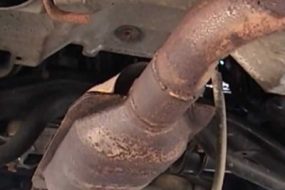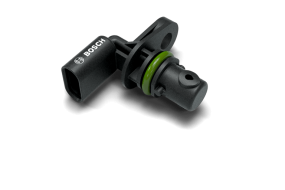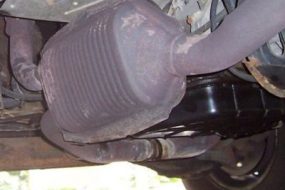
A car’s transmission fluid controls the lifespan and effectiveness of the transmission. Having the exact reading when adding a transmission fluid will ensure a car owner makes quality decisions regarding when to add more fluid and when not to.
In case you have settled in your heart to add in your transmission oil by yourself without the help of a professional, keeping your engine running while you get it done is the ticket out of other car troubles. So, why check transmission fluid when the engine is running?
Checking your transmission fluid when your car is running gives you the proper readings which will support your decisions to know if your engine needs a top-up of transmission fluid or not.
Should You Check Your Transmission Fluid When Engine Is Running?
Yes, ensure you check your transmission fluid when the engine or car is running. Leaving your car running while you check your transmission oil is the same as giving a scientist accurate readings.
As important as data is to a scientist is how important getting the right fluid level of your car engine is important to you as a car owner.
Fluid can expand in the presence of heat, the same is to transmission fluid. It expands when the engine is hot, this way you know if adding a little is the best safety measure or if leaving it at the current level will sustain your car’s engine.
Mechanic and automobile experts shun checking your transmission oil when the car isn’t running yet because the readings are probably inaccurate even with the use of a dipstick.
Why Check Transmission Fluid When the Engine is Running?
The reasons why you should check transmission fluid when the engine is running are:
1. To Get the Exact Fluid Level in the Engine
This shouldn’t sound cliché, as it is being mentioned at all times. It is important to show how important having the right fluid level readings is paramount to the well-being of your vehicle.
As car owners, a daily routine check is important to have a safe and smooth ride for the day. Basic things like the coolant level, fluid contents, and a check to be sure nothing is leaking is important.
Imagine taking up your car early in the morning only to discover your engine parked off the road because you failed to top up your transmission fluid.
Many times we check the fluid when the car is cold, but doing this is the same as not checking at all. A bad reading is the same as no readings. As car owners, you need the right readings for effective engine performance.
2. For Effective Fluid Movement
Fluids expand not when they are cold, but when they are heated at a high. It makes movement easy and lubrication as effective as possible. Aside from getting the exact fluid level readings, you also want to drive safely.
Mechanics and automobile experts push it as advice to car owners to ignite a car for 30sec before moving it. This way, every slumbering part of the vehicle is alive again.
Heat also ensures fluid can move effectively to the right channels in the engine.
How to Check an Automatic Car Transmission Fluid Level
First, you need your dipstick. Depending on your wheel, the dipstick is in various places. In a four-wheel drive, you easily find your dipstick along the transaxle popping out of its space a little.
Locating your dipstick is the basic step you need to check an automatic car transmission fluid level. Here are a few steps you should consider:
1. Take Out The Dipstick
Ensure you have your car gear in “park or neutral” and keep your engine running to ensure your readings are accurate.
Leave the engine to run for 30 seconds or more and pull out the dipstick. Ensure you don’t turn off the engine when pulling out the dipstick.
2. Take a Closer Look at the Fluid
You need to get your hands stained a little to pull this off. Put the tip of your index finger in the fluid right on the dipstick, and have the fluid run in between your finger and the tip of your thumb.
When checking, the transmission fluid should appear pinkish and clear. If it doesn’t or releases some burnt smell, you need the help of a mechanic to drain out the former fluid and do a transmission fluid refill.
3. Wipe the Dipstick Clean
Get a clean rag, one without dust, and clean the dipstick before reinserting. After reinserting the dipstick, pull it out again.
If you notice the transmission fluid doesn’t reach a full line, use a funnel to pour in more transmission fluid gently until you have a good level displayed.
Ensure you don’t overfill; it can affect the effectiveness of your car engine.
How to Check Transmission Fluid without Dipstick
A dipstick is important when checking transmission fluid, it makes checking the fluid level accurately an easy task but for new cars, knowing where the dipstick of your vehicle is is a little hard.
You won’t require the old fashion way of checking your transmission fluid; here are a few things you should consider:
Be Sure if Your Car Has a Dipstick
Dipsticks may be hard to find, most especially for folks who have little or no knowledge of cars. Manufacturers are being creative with designs recently and if you own a new model car, you probably have issues finding your dipstick.
If you can easily find it, use it, and if you can’t there is another way that doesn’t need the intervention of a dipstick.
Check If Your Car Has a Sealed Transmission
Your manuals are guidelines, but the truth is truth, many people don’t use them. I don’t know if I want to be real with you, but checking if your car has a sealed transmission will require using your manual to be certain.
You need to know if your car is an automatic transmission or a sealed transmission. In case yours is a sealed transmission, to avoid getting your hands into error, see a mechanic.
Check the Transmission Fluid Temperature
This will require your back to be bent underneath the car; you can’t pull this off effectively as a newbie. Getting a mechanic will save you away from backaches.
To check the temperature will require a scanning tool or possibly if you can get your hands on a kitchen thermometer in other to check liquid temperature of the vehicle.
Check the Drain Plug
You will need gloves to get this done to avoid getting burnt. Have a drain pan underneath the inspection plug, and loosen the plug.
If you have the inspection plugs in your hands and you notice fluids drain out of the opening where the inspection plug is taken off will mean your engine is overfilled; you need to drain out before adding back the inspection plug.
Conclusion
It is more stressful with a sealed transmission compared to the easy way of checking your fluid level with a dipstick. Checking the transmission fluid is needed and should be done when the engine is running in other to get the exact transmission fluid level. If you find it difficult to check it yourself, see a mechanic.










One reply on “Why Check Transmission Fluid When Engine is Running?”
[…] note that a transmission dipstick is also a good way to assist you in determining what type of transmission fluid is needed for your […]
Comments are closed.